The Brutally Honest Guide to Cleaning Your Prefinished Hardwood Floors
I’ve been working with hardwood floors for what feels like a lifetime. In all that time, I’ve seen gorgeous floors that look brand new after decades, and I’ve seen brand-new, expensive floors completely trashed in less than a year. The difference? It almost always boils down to how they’re cleaned.
In this article
Prefinished hardwood is an incredible material, but it’s wildly misunderstood. People hear “factory finish” and think it’s bulletproof. So they treat it like vinyl, breaking out harsh chemicals or—and this one makes me cringe every time—a steam mop. Honestly, that’s the fastest way to kill your floor and waste thousands of dollars.
This isn’t just about a few quick tips. This is the real-deal method I teach every single one of my clients to make sure their investment lasts.
First, A Few Quick Wins
If you’re short on time, do these three things today. Seriously. It’ll make a huge difference.
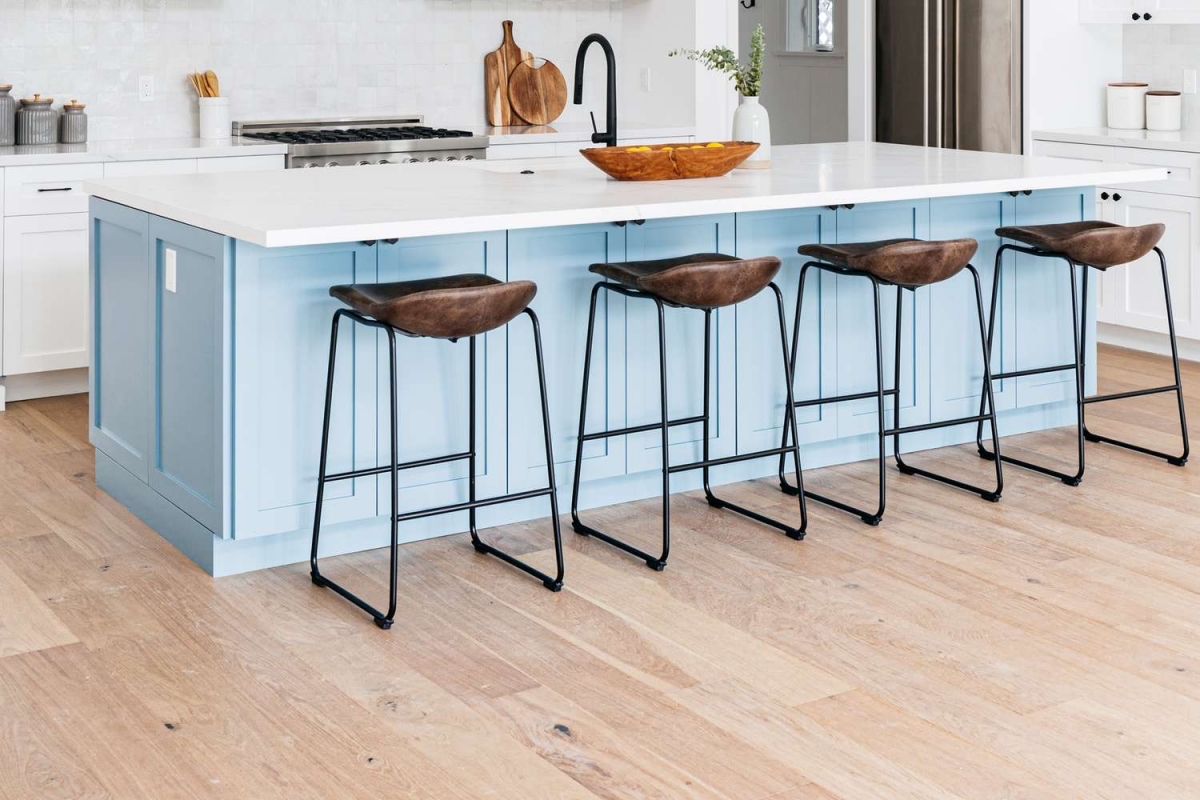
- Pad Your Furniture: Go stick some quality felt pads on the legs of your dining chairs and tables. This takes five minutes and prevents a lifetime of scratches.
- Check Your Vacuum: Look at the head of your vacuum. Does it have a hard, spiky spinning brush (a beater bar)? If so, make sure you can turn it off. If you can’t, stop using it on your hardwood immediately.
- Know Your Humidity: Order a simple digital hygrometer online. They’re about $15 on Amazon or at a hardware store. Knowing your home’s humidity level is more important than you think, as you’ll see in a bit.
Okay, So What Are You Actually Cleaning?
To take care of something, you have to know what it is. The finish on your floor isn’t just a layer of polyurethane. Think of it more like the clear coat on a new car. In the factory, they apply multiple coats—sometimes seven or more—of a super-tough urethane finish that’s packed with aluminum oxide. That’s one of the hardest minerals on the planet. Each coat gets zapped with UV light, curing it instantly into a crystal-clear, armor-like shell.
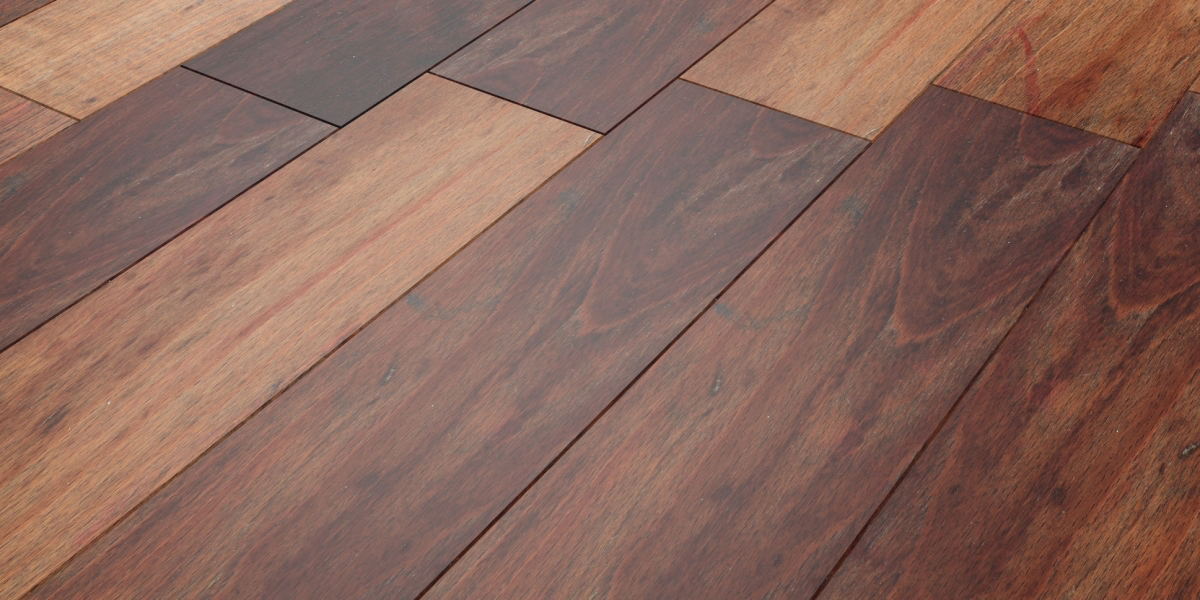
This shell is amazing at resisting daily wear. But it has two enemies: fine grit and the wrong chemicals.
Tiny particles of sand or dirt on your shoe act like sandpaper under your weight. They create millions of microscopic scratches that, over time, diffuse light and make your floor look dull and hazy. That’s why the most important part of your routine isn’t mopping—it’s dusting.
My Top 5 Hardwood Floor Killers
Before we get into what to do, let’s talk about what NOT to do. Avoid these at all costs:
- Steam Mops: Never, ever, ever. Steam forces hot moisture into the seams of the boards, causing the wood to swell, delaminate the finish, and look cloudy over time. It’s irreversible damage.
- Oil Soaps and Waxes: Products that promise to “rejuvenate” or add a warm glow are usually trouble. They leave behind an oily, sticky residue that builds up, attracts more dirt, and can make it impossible to professionally recoat your floors later.
- Vinegar and Water: A classic for other surfaces, but a bad idea here. Vinegar is an acid. It will slowly eat away at your polyurethane finish, dulling it over time.
- All-Purpose Cleaners: That spray you use on your counters is not formulated for your floor’s specific finish. It can leave a hazy film or be too harsh.
- A Soaking Wet Mop: Wood and water are not friends. Excess water seeps between the planks, leading to swelling, cupping, and potential water damage.
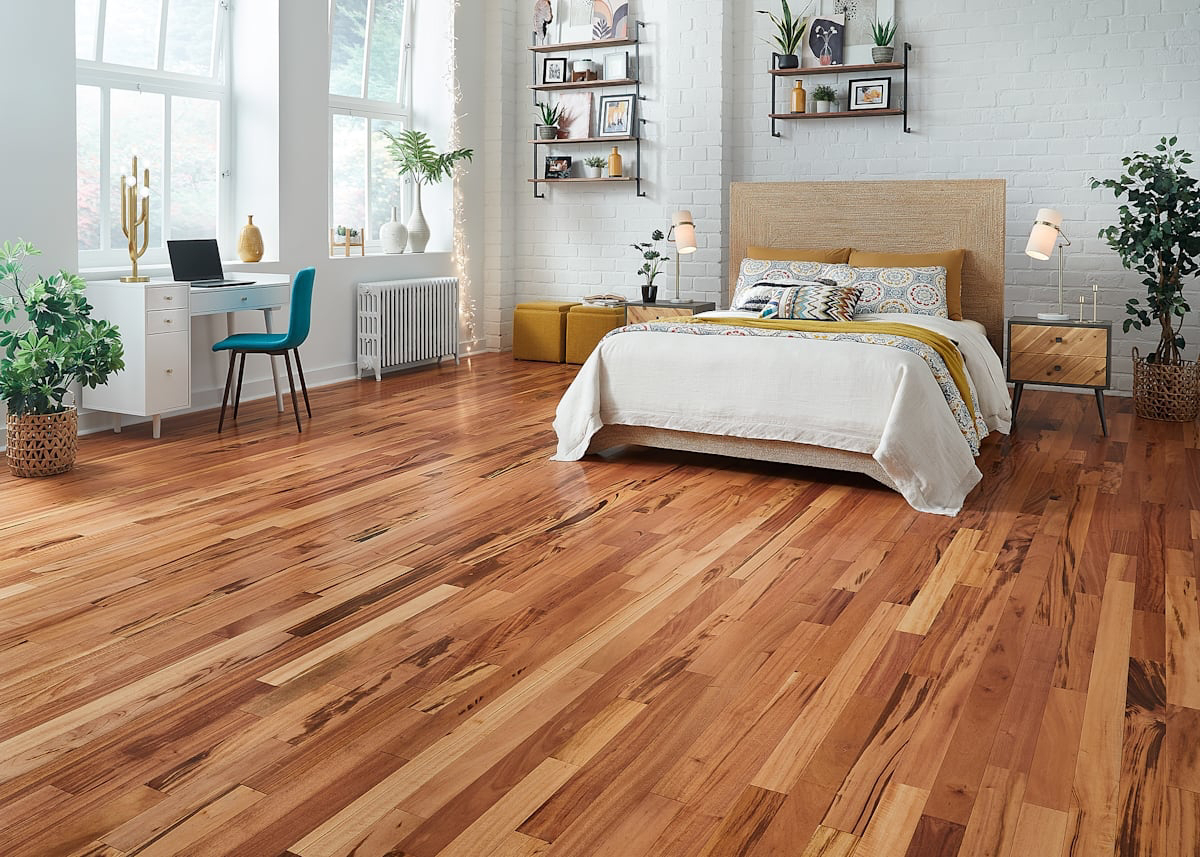
The Pro’s Daily and Weekly Cleaning Routine
This is all about working smarter, not harder. You need the right tools and just a few minutes a day.
Daily Dust-Off: The Most Important 5 Minutes
The best thing you can do for your floor is get the grit off it every day. I recommend a good quality microfiber dust mop with a wide head—think 18 to 24 inches. A good setup with the mop and a few extra machine-washable pads will run you about $30 to $50 and is worth every penny.
Unlike a broom that just kicks dust into the air, microfiber uses static electricity to grab and hold onto grit and pet hair. Use long, smooth passes. At the end of a row, twist the mop in a figure-8 motion to start the next row without lifting the head. This keeps all the trapped dirt on one side. When you’re done, take the pad outside and give it a good shake.
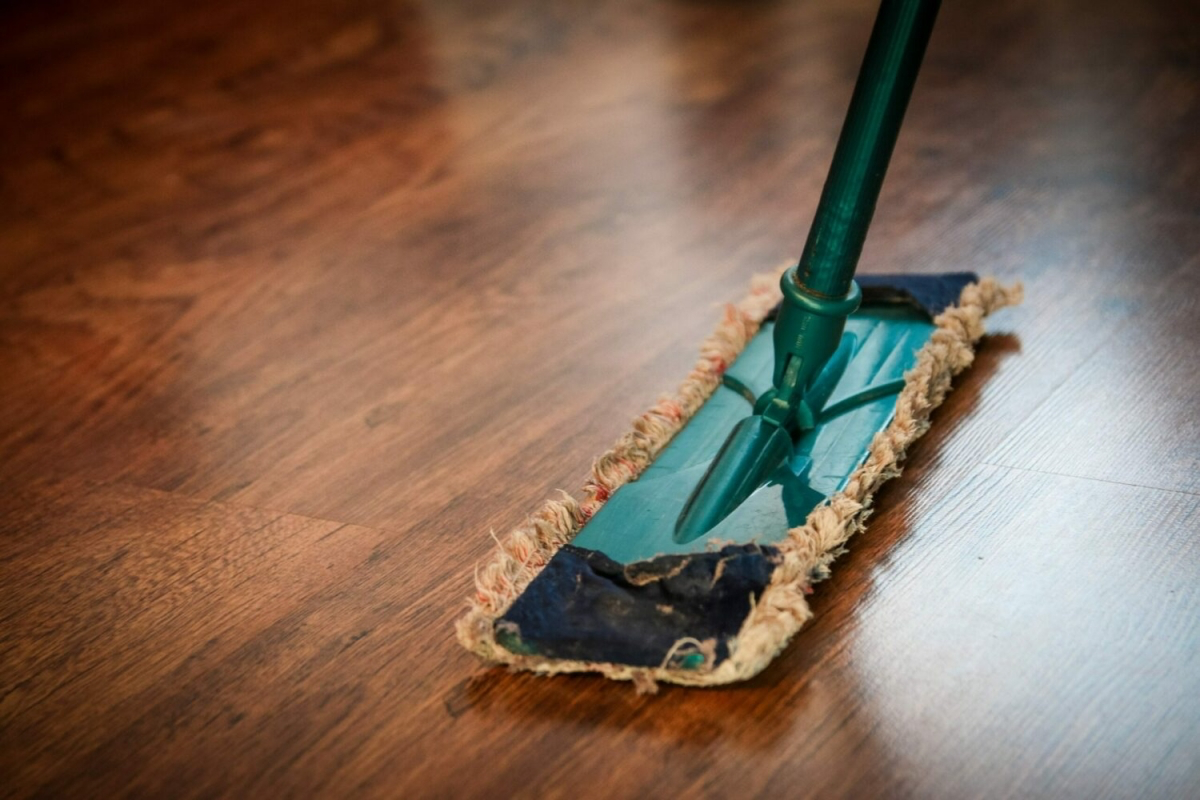
Oh yeah, a vacuum is fine too, but ONLY if you use a soft-bristle head designed for hard floors. If your vacuum has a beater bar (that spinning brush for carpets), you MUST turn it off. Those stiff bristles will eventually beat up your finish.
Weekly Cleaning: The Two-Pad Method
Once a week, you’ll need to clean up the grime that dusting leaves behind. The key is using the right cleaner and minimal moisture.
Your cleaner is critical. You want a pH-neutral cleaner made specifically for polyurethane-finished floors. The pro-grade stuff like Bona, Loba, or Basic Coatings is what we use because it’s engineered to clean effectively without leaving any residue. You can find Bona at places like Target or Home Depot for about $12-$20 a bottle, and it lasts for months. You might be tempted to grab a cheaper, all-purpose brand, but trust me, many of them leave a film that will dull your floor over time.
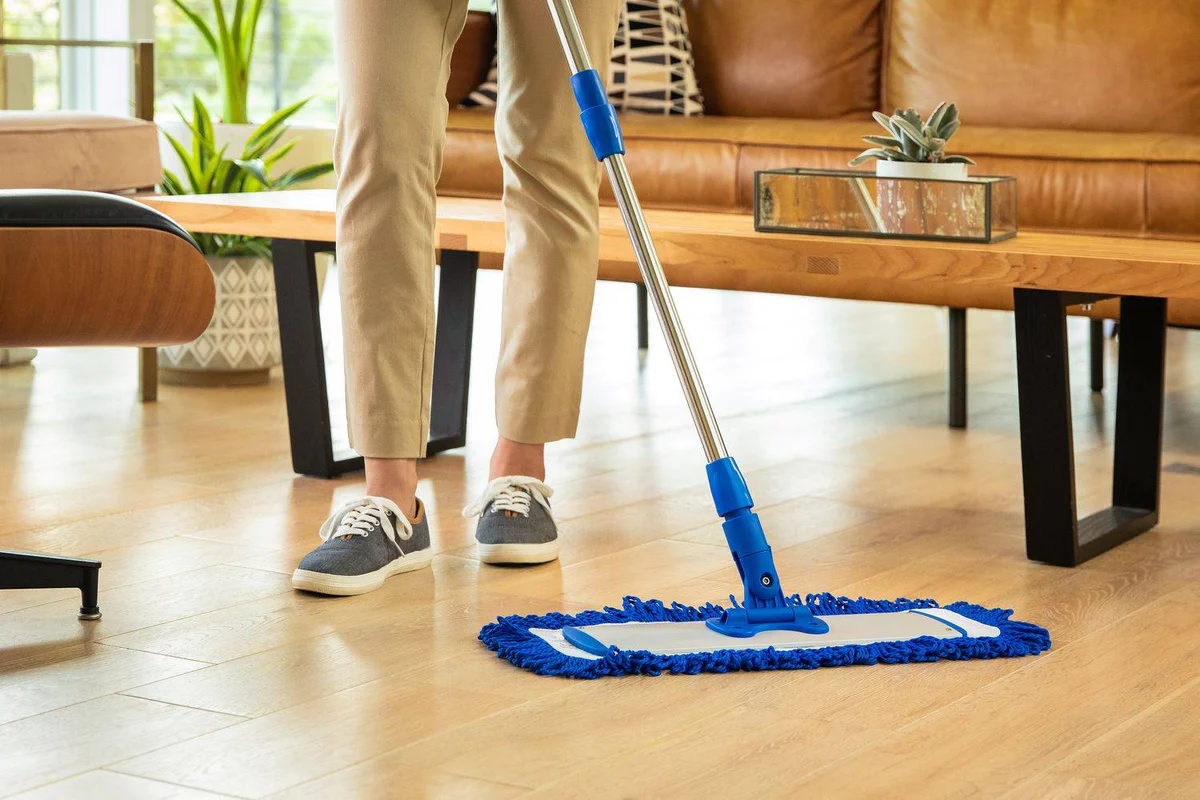
Here’s the method I swear by:
- Get your gear: You’ll need your spray cleaner and TWO clean, dry microfiber mop pads.
- Step 1: Lightly mist a small 4×4 foot section of the floor. Don’t soak it! A fine mist is all you need.
- Step 2: Use the first dry pad to wipe the misted area. This pad will pick up the dirt along with the cleaner.
- Step 3: Immediately go over the same section with your second, completely dry pad. This picks up any leftover moisture and buffs the floor dry.
Your floor should be dry to the touch in under a minute. For a normal-sized room, this whole process takes 10 minutes, tops. It’s fast, and you’re never pushing dirty water around.
Let’s Talk About Pets, Spills, and Scratches
Life happens, especially with furry friends and kids. Here’s how to handle the inevitable.
For Pet Owners: The biggest issue with pets isn’t just the hair. For claws, the best defense is a good offense—keep their nails trimmed regularly. For the dreaded water bowl slobber, put a waterproof mat under their bowls. It’s a floor-saver. If an accident happens, clean it up immediately with a paper towel. Then, use your pH-neutral floor cleaner. For lingering odors, you can try an enzymatic pet cleaner, but heads up! You MUST test it in an inconspicuous spot first (like inside a closet) to make sure it doesn’t react poorly with your specific floor’s finish.
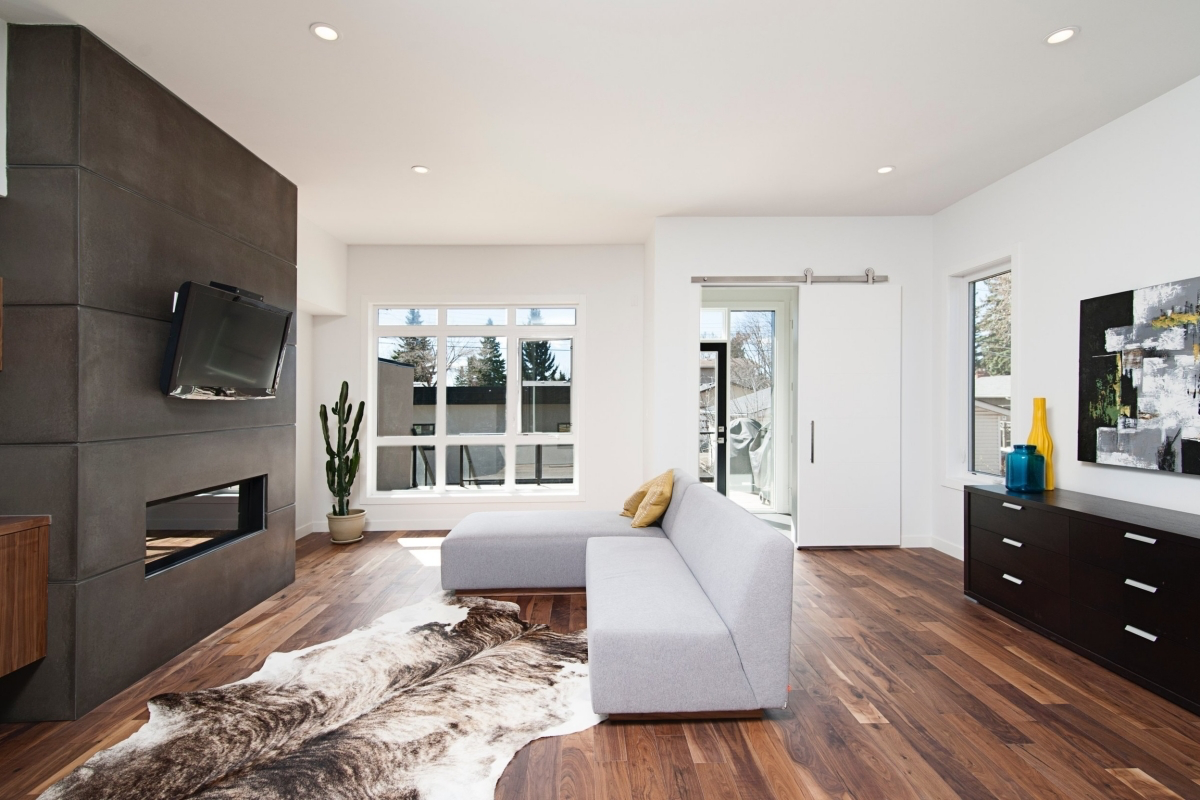
Spills & Stains: Wipe up spills the second you see them. For sticky stuff like juice, a spritz of your floor cleaner on a microfiber cloth will do the trick.
Scuffs vs. Scratches: A scuff is usually just a rubber or plastic mark ON the finish. Most of the time, you can just buff it out with a dry cloth or even a clean tennis ball. A scratch is a physical groove CUT INTO the finish. For a very minor, light scratch, you can often hide it with a stain marker or a dedicated floor finish repair kit. You can find these for around $15-$25, and they’re great for tiny cosmetic touch-ups.
Furniture Damage: This one is non-negotiable. Every table, chair, and sofa needs thick felt pads. Check them every few months to make sure they haven’t worn down or collected grit. For an office chair, you HAVE to replace the hard plastic wheels. Go online and search for “soft polyurethane caster wheels for hardwood.” They’re about $30 a set and will save your finish from being ground to dust.
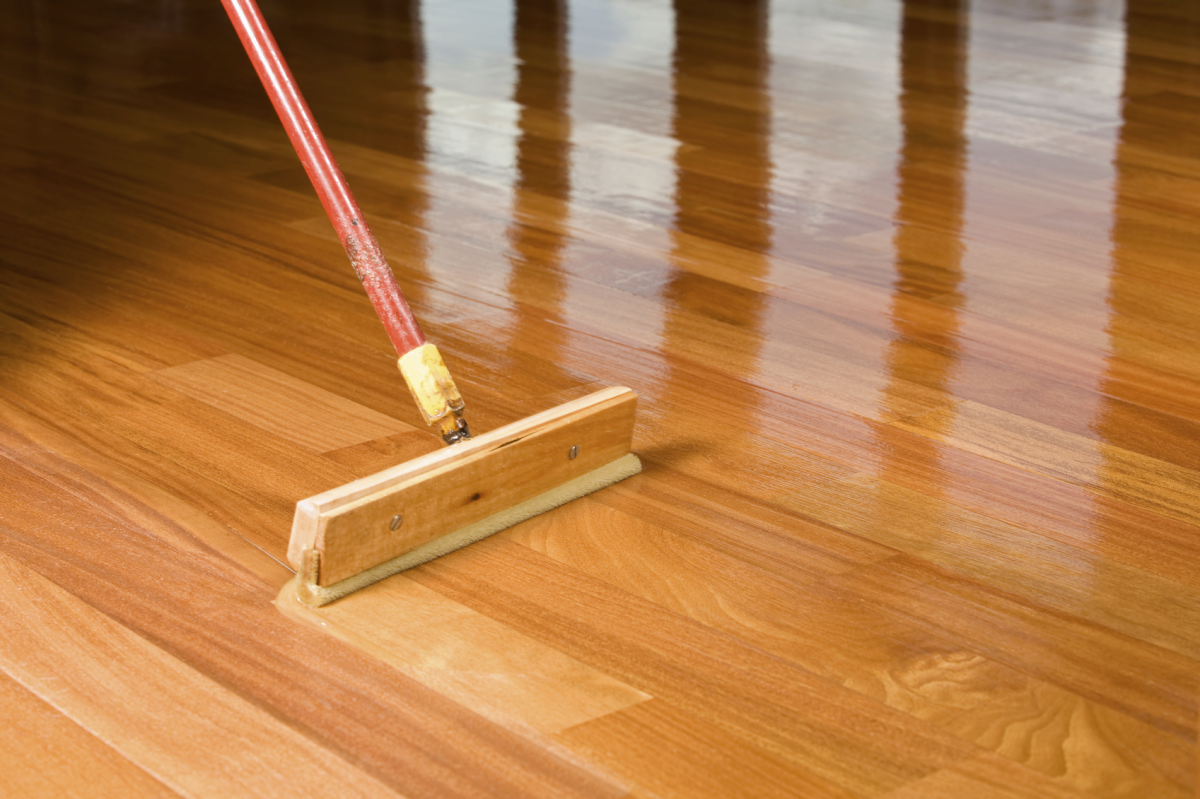
A Quick Word on Climate Control
Where you live matters. Wood is a natural material that acts like a sponge, expanding when it’s humid and shrinking when it’s dry. Your goal is to keep your indoor relative humidity between 30% and 50% year-round.
I once saw a gorgeous new floor in a very dry, high-altitude climate that had developed huge, quarter-sized gaps after just one winter because the owner didn’t run a humidifier. In humid, coastal areas, the opposite happens—boards can swell and cup. Your HVAC system is your first line of defense. Use a humidifier in the dry winter months and your AC or a dehumidifier in the sticky summer. That $15 hygrometer will tell you exactly what you need to do.
What About When My Floor Looks Tired?
Even with perfect care, after many years, a floor can lose its luster. This is where you need to be careful. You’ll see DIY “floor refresher” or “polish” products promising to bring back the shine. My professional advice? Run away.
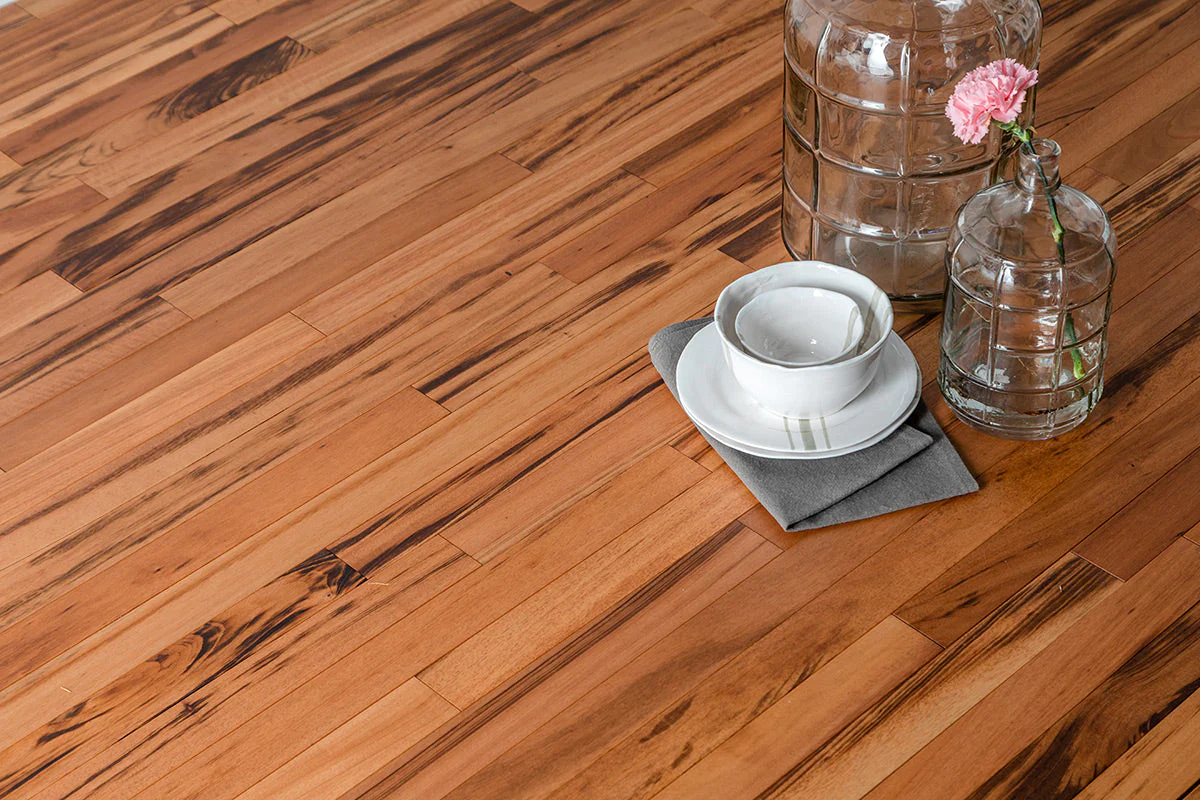
These products are typically a low-grade acrylic wax. They might look nice for a week, but they scuff easily, build up in layers, and turn into a sticky, hazy mess that’s a nightmare to remove. Worse, once that stuff is on your floor, a professional can no longer perform a “screen and recoat”—a process where we lightly abrade the original finish and apply a new topcoat of professional-grade urethane. That polish prevents the new coat from bonding.
So, when your floor is truly worn, your only option is to call a pro. Don’t be tempted by the quick-fix bottle. It often leads to needing a full, expensive sand-and-refinish job down the road.
At the end of the day, it’s not about being a slave to your floors. It’s about building a few simple, smart habits. Do that, and you’ll have beautiful floors that you can be proud of for years to come.
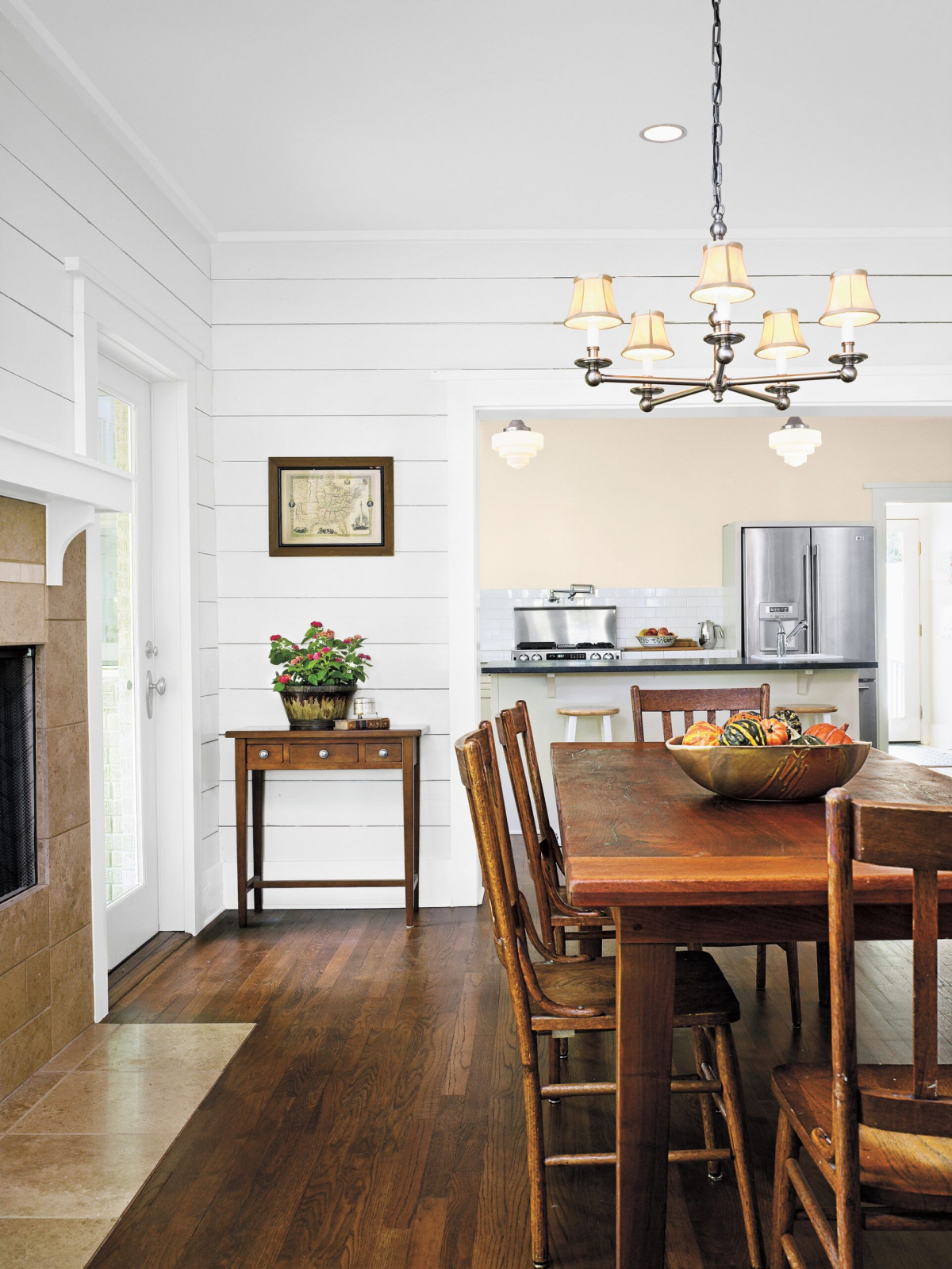
Galerie d’inspiration
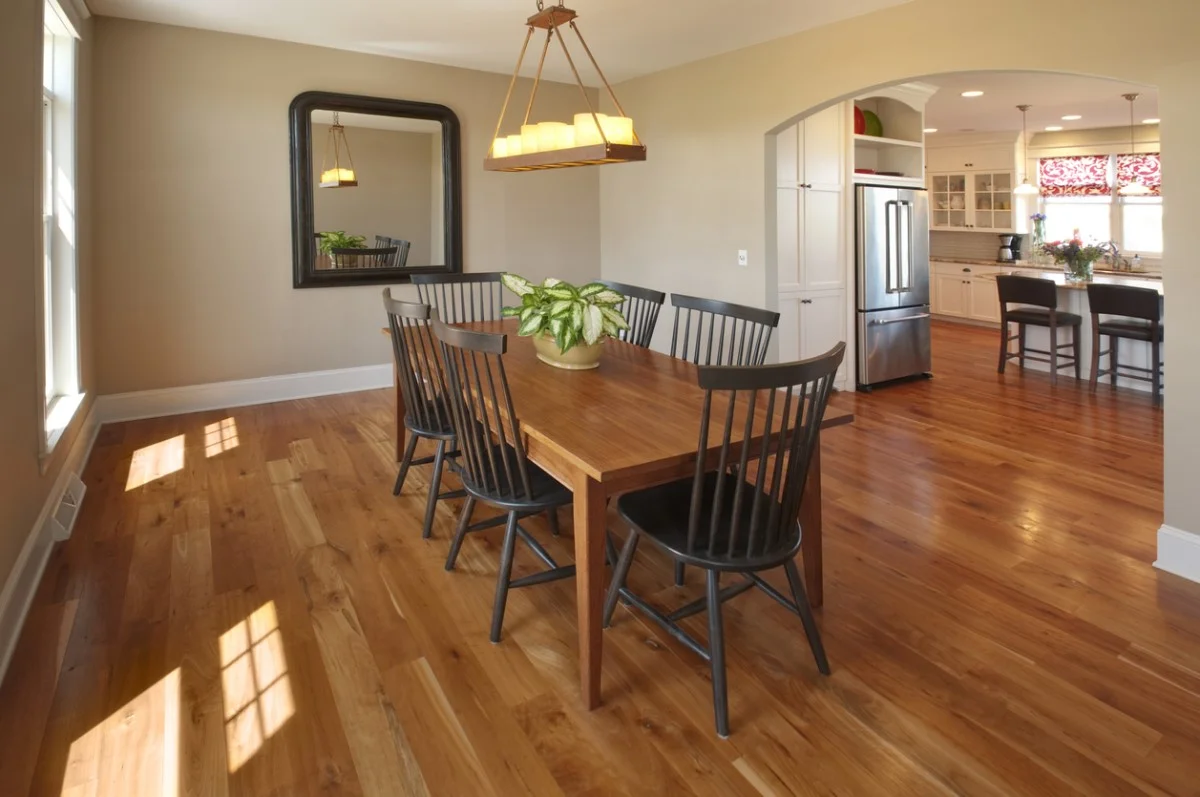
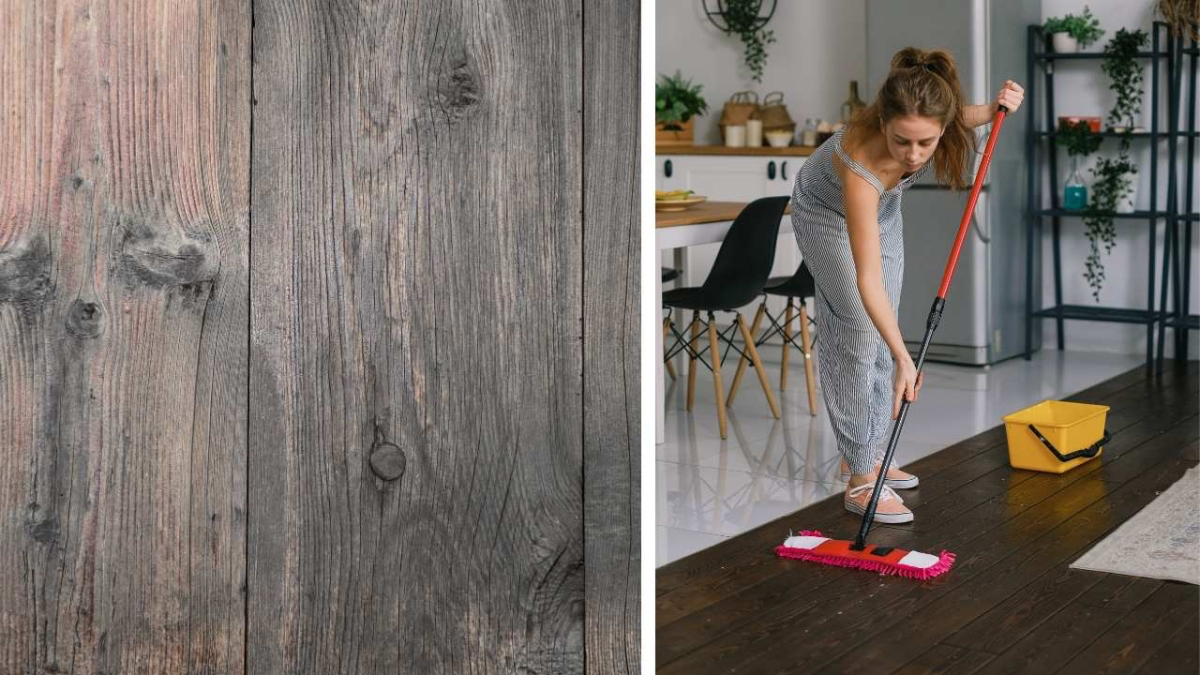
So, why is a $15 hygrometer suddenly essential for my expensive floor?
Because wood is a natural material that breathes. It absorbs moisture from the air and releases it, causing it to expand and contract. When humidity is too high (above 55-60%), boards can swell and press against each other, leading to “cupping,” where the edges are higher than the center. When it’s too low (below 35-40%), the wood shrinks, creating unsightly gaps between boards. A hygrometer is your early warning system, telling you when to run a humidifier or dehumidifier to keep your floor stable and prevent permanent damage. It’s the cheapest insurance policy you’ll ever buy.
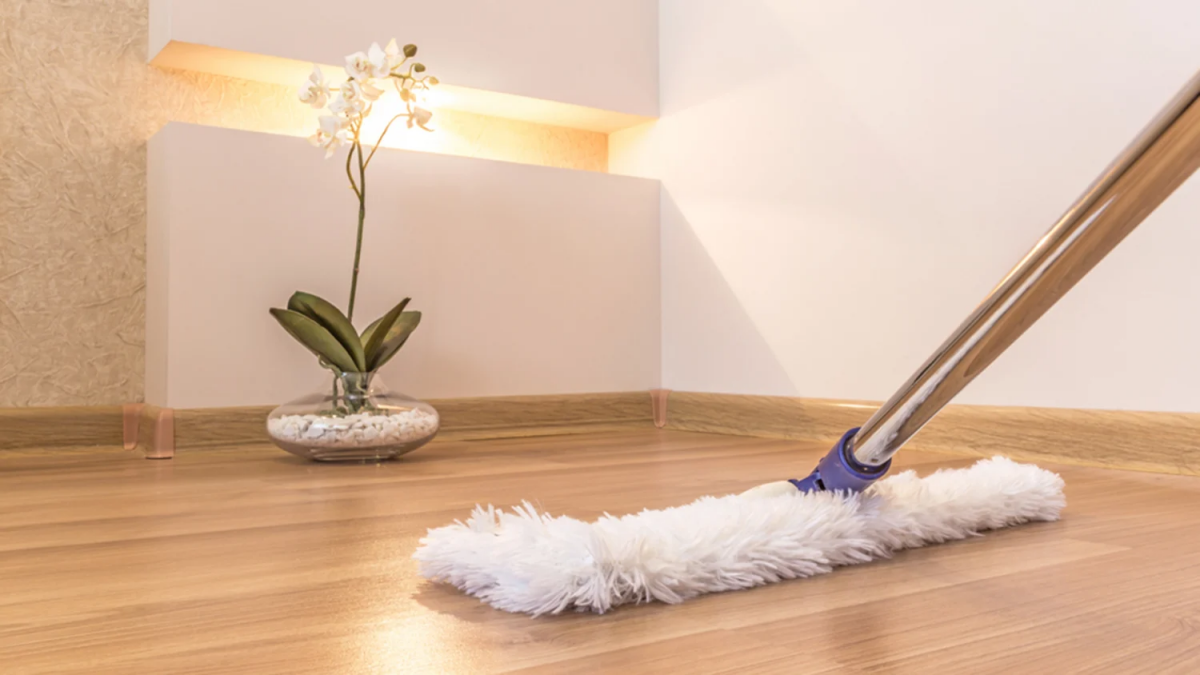
The National Wood Flooring Association (NWFA) explicitly warns that most finish damage is caused not by foot traffic, but by improper cleaning with abrasive or chemical-heavy products.
This means your choice of cleaner is critical. Many DIY solutions, especially those with vinegar or ammonia, are acidic and will slowly eat away at the urethane finish, dulling it and making it more susceptible to scratches. Over time, this chemical wear can lead to a cloudy, hazy appearance that can’t be fixed without a full-screen and recoat.
The right tool for the job: A quality microfiber mop is non-negotiable. Forget string mops that slosh too much water around or sponge mops that just push dirt into the seams.
For the cleaner itself: Stick to a pH-neutral, water-based hardwood floor cleaner. Products like Bona Hardwood Floor Cleaner or Loba’s Lobacare FloorCleaner are specifically formulated to dissolve dirt without leaving a residue or harming the delicate aluminum oxide finish. A light mist is all you need—never saturate the floor.










